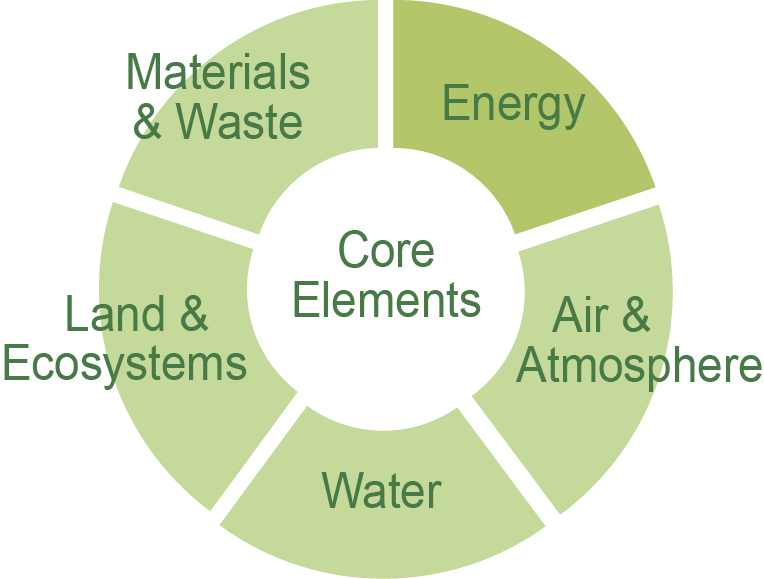Green Remediation Focus
Green Remediation Core Elements: Energy

Learn about the other core elements for green remediation strategies by clicking on them.
Green remediation strategies addressing energy conservation build on requirements or standards under the Energy Independence and Security Act. Cleanup at many sites involves energy-intensive technologies such as pump-and-treat (P&T), thermal desorption, multi-phase extraction, air sparging or soil vapor extraction. The BMPs focus on opportunities to improve energy efficiency of onsite equipment and buildings, meet electricity demands of treatment systems through renewable energy instead of fossil fuel-based energy, and reduce consumption of petroleum-based fuels for routine vehicles and heavy machinery.
Sample BMPs
- Use gravity flow processes rather than electric or diesel-powered pumps to transfer water and other liquids wherever feasible.
- Equip motors with variable frequency drives, which automatically adjust the energy use of remediation equipment to meet real-time energy demand.
- Install onsite solar or wind energy systems to replace or offset energy supplied by the local utility grid.
- Install ground- or water-source heat pumps to extract and apply a site's natural geothermal energy for purposes such as water and space heating or cooling.
- Implement an engine idle reduction plan to avoid fuel use when machinery is not actively engaged.
Site-Specific Examples
- Three wind turbines offset more than half of the grid electricity used to extract contaminated groundwater from 16 wells at the Continental Steel Corp. Superfund site in Kokomo, Indiana.
- Energy conservation measures taken for a P&T system operating at the Re-Solve, Inc. Superfund site in North Dartmouth, Massachusetts, resulted in a 26% reduction in electricity consumption.

